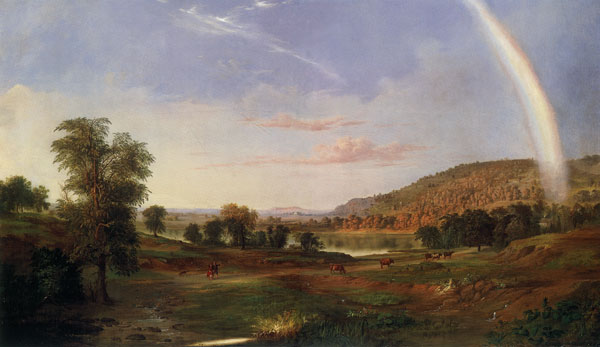Founded by Thomas Cole (1801-1848), the Hudson River School was the first American artist colony. Cole was a landscape painter who lived in an area overlooking the Hudson River in New York. Known as a wanderer, rambling around the Hudson River ecosystem, he created sketches of the natural scenes he found in the natural countryside. The school became an art movement influenced profoundly by Romanticism, reflecting the three political themes of 19th century America: discovery, exploration, and settlement. Several artists emerged from the Hudson River School, painting landscapes across America, characterizing the vast panoramic landholdings of the country and how it differed from the European landscape.
The Oxbow (Figure 1) was a dramatic landscape for its time, illustrating an incoming storm front threatening the sunny blue skies. The oxbow of the Connecticut River valley is a panorama interpreted as a confrontation between nature and civilization. The lone tree anchors the front of the image as the eye travels down the hill, antagonizing the oxbow in the river filling the valley, then up through the mountains to the turbulent sky and receding storm in the top half of the painting.
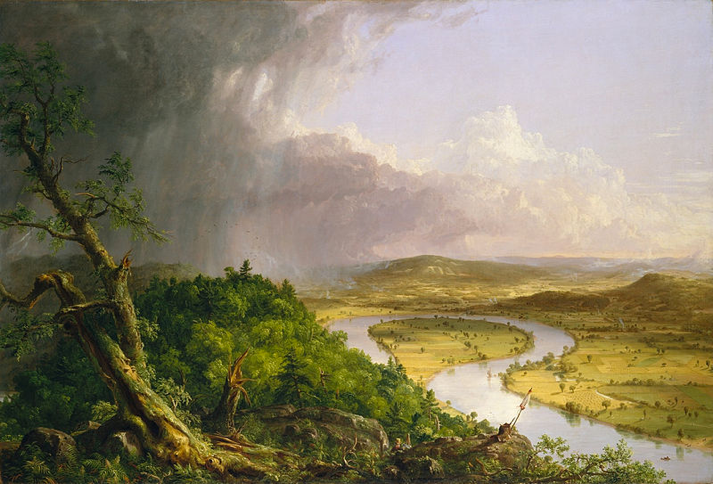
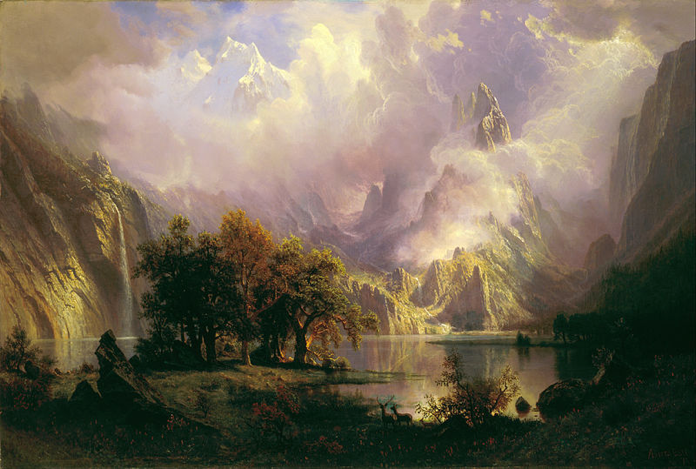
Niagara Falls is a classic American waterfall known around the world. In his painting, Niagara Falls (Figure 3), Frederic Church (1826-1900) places the viewer on the edge of the waterfalls, ready to drop down into the green-blue, clear waters of the river below, the roar of the falls seeming to fill the painting. As part of the Hudson River School, Church painted many epic-sized landscapes of America’s iconic locations.
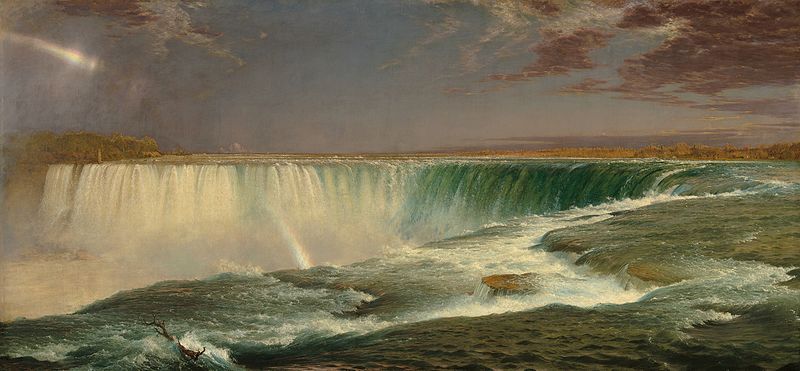
Although Julie Hart Beers (1835-1913) did not receive formal training, her brothers were painters, and she undoubtedly learned from them. Female artists, frequently excluded from membership in art schools, were limited their ability to meet potential clients. They were unable to paint using nude models and were deemed unsuitable for painting outdoors because of their poor physical capabilities of transporting weighty paint equipment. One painter often complained about how women’s dresses handicapped the group while climbing rocks, and they did not understand how to pitch a tent. Yes, it would be hard to climb the hills and rocks wearing corsets, bustles, hoops, and other required female clothing. However, Beers became a successful landscape painter, developed a set of clients, and taught other female artists, taking them on sketching trips in the mountains. Deep in the woodlands, Beers painted Birches by a Woodland Stream (Figure 4), the details of the peeling bark on the trees surrounding the gently flowing stream, a demonstration of her attention to detail.
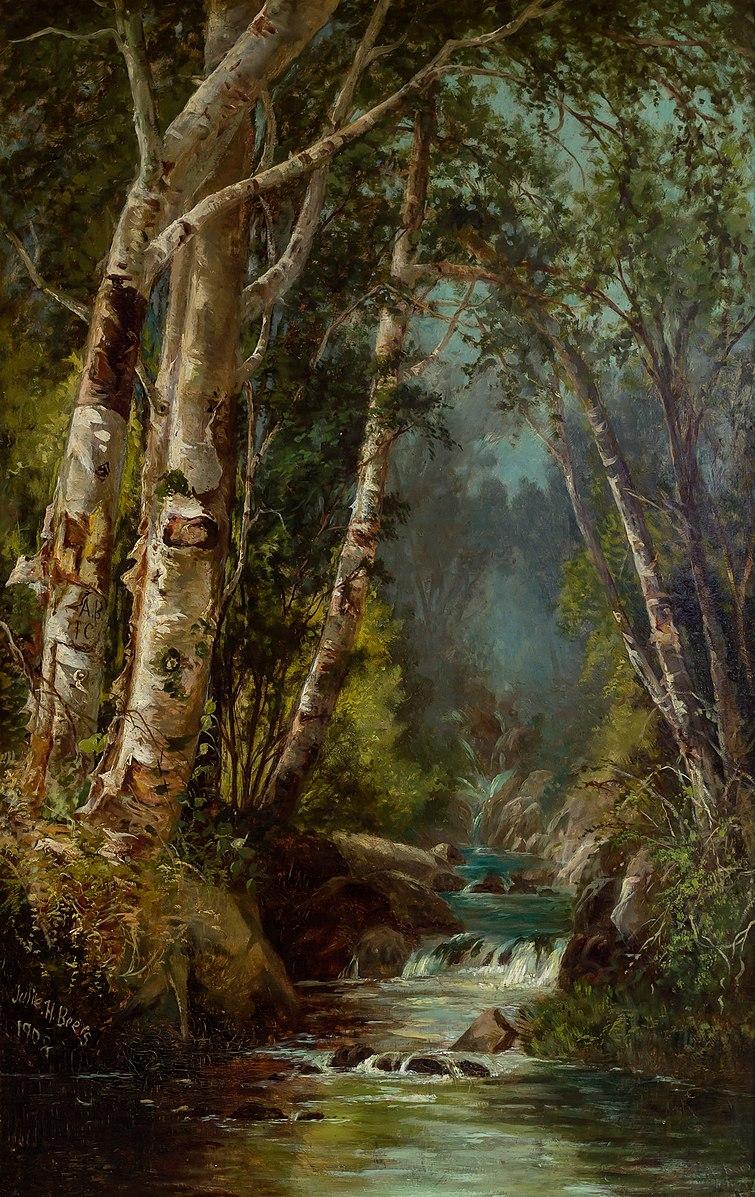
Harriet Cany Peale (1799-1869) married the well-known artist Rembrandt Peale whose accomplishments may have overshadowed her work at the time. Harriet Peale started as a portrait painter and moved into landscapes. Fortunately, in the mid-1800s, women activists started to revolutionize clothing, and skirts became shorter, chemises looser, and special rugged hiking boots gave women more mobility. Kaaterskill Clove (Figure 5) was painted in a location favored by many of the landscape painters. The large boulders sit in the foreground, anchoring the pathway, leading to the distant mountains fading into the misty sky.
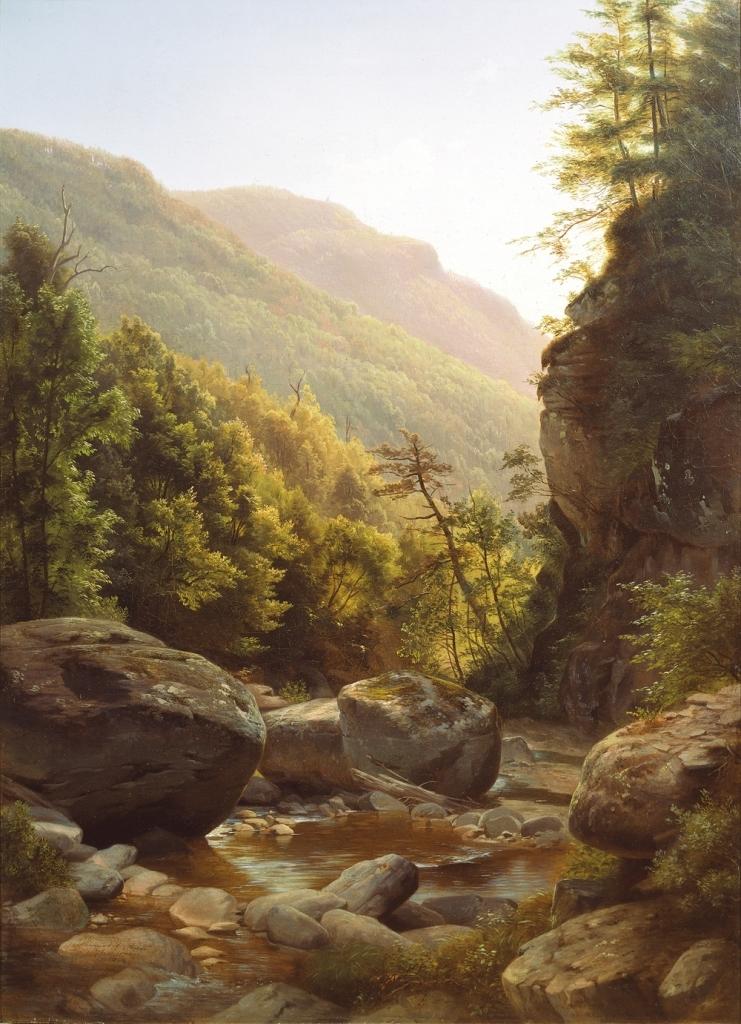
Robert Seldon Duncanson (1821-1872) was an African American painter who first honed his skills in fine art by replicating prints and painting portraits. Inspired by the Hudson River School and especially Thomas Cole, Duncanson aspired to paint landscapes. He traveled around the country on sketching tours and brought concepts back to the studio. Landscape with Rainbow (Figure 6) captures the vast expanse of the mountains, trees, and rock formations. Duncanson used a wash to create a golden light, enhancing the harmony found in nature, producing the luminescent sky and rainbow.
